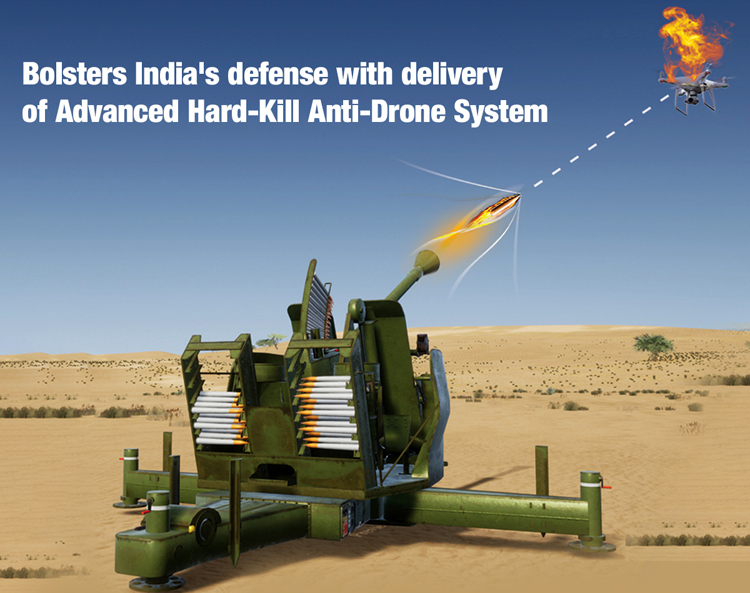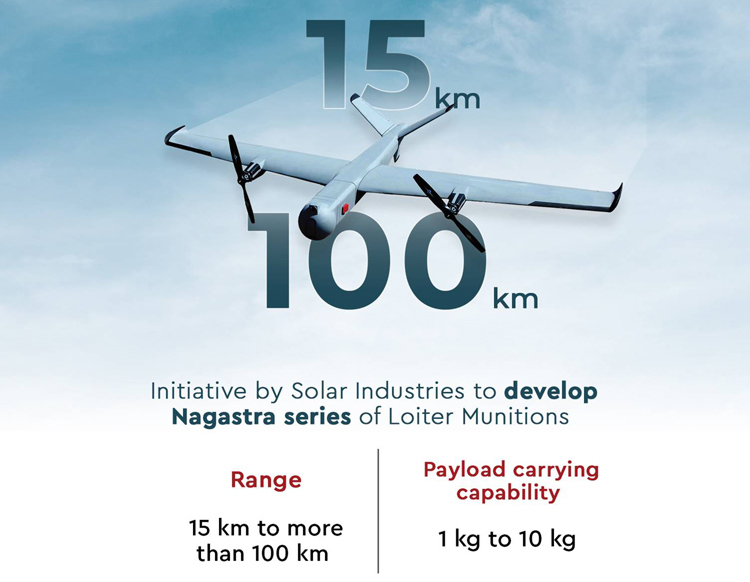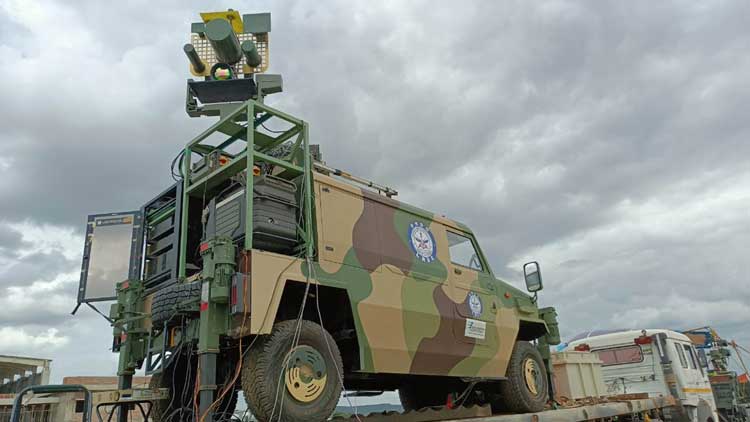INDIAN ARMED FORCES CHIEFS ON OUR RELENTLESS AND FOCUSED PUBLISHING EFFORTS

The insightful articles, inspiring narrations and analytical perspectives presented by the Editorial Team, establish an alluring connect with the reader. My compliments and best wishes to SP Guide Publications.

"Over the past 60 years, the growth of SP Guide Publications has mirrored the rising stature of Indian Navy. Its well-researched and informative magazines on Defence and Aerospace sector have served to shape an educated opinion of our military personnel, policy makers and the public alike. I wish SP's Publication team continued success, fair winds and following seas in all future endeavour!"

Since, its inception in 1964, SP Guide Publications has consistently demonstrated commitment to high-quality journalism in the aerospace and defence sectors, earning a well-deserved reputation as Asia's largest media house in this domain. I wish SP Guide Publications continued success in its pursuit of excellence.
Counter Drone & Loiter Munitions for Army
The indigenous development of counter-drone and loiter munitions for the Indian Army has seen significant advancements, all designed to enhance the Army's capabilities in modern warfare with advanced technologies
 |
The Author is Former Director General of Information Systems and A Special Forces Veteran, Indian Army |

Bengaluru-based AXISCADES Technologies, a leading end-to-end engineering and technology solutions provider, issued a company statement on June 10, 2024, saying it has begun the delivery of advanced counter-drone systems to the Indian Army. The delivery is part of the ₹100 crore orders for the Man Portable Counter Drone System (MPCDS) developed by AXISCADES. The statement further said the company aims to deliver all drone units to the Army by end 2024. The contract marks a major milestone for AXISCADES, as the company begins the delivery of these systems, which are the first of their kind to be inducted into the Indian Armed Forces. The number of counter-drone systems contracted by the Army from AXISCADES has not been disclosed.
Arun Krishnamurthi, the CEO and Managing Director of AXISCADES said, "This is the first Counter Drone System being inducted into the Indian Defence Forces in the man portable category, and the system is being deployed at multiple locations across various commands in the Indian Army. We aim to continue to innovate and provide advanced security solutions to meet the evolving needs of our Armed Forces. We will continue to innovate and provide advanced security solutions to meet the evolving needs of our armed forces and make India self-reliant in the defence engineering ecosystem."
AXISCADES Technologies has begun the delivery of advanced counter-drone systems to the Indian Army as part of a ₹100 crore order for the Man Portable Counter Drone System (MPCDS)
The uniquely designed, indigenous MPCDS has the capability to operate on both battery and main power supply. It can cover multiple frequency spectrums, including command, control and navigation. Notably, it can also detect and jam a wide variety of drones within a range of up to 5 km. According to news reports, the Ministry of Defence (MoD) and Armed Forces have outlined plans to enhance their Counter UAV capabilities through multiple tenders, including emergency procurements, with an estimated addressable opportunity of ₹3,000 crore within India alone over the next five years.

AXISCADES has subsidiaries in the US, UK, Canada, Germany, India, and China; and offices in Germany, France, Denmark, USA, and Canada. The company AXISCADES has work force of over 3,200 professionals working across 17 locations across North America, Europe, the UK, and Asia-Pacific, striving to reduce the programme risk and time to market.
Zen Technologies announced the supply of the Zen ADS-HK system, an indigenous "hard kill" anti-drone system, to the Indian Army's Air Defence College, featuring an advanced electro-optical tracking system and auto-gun capabilities
Also, NOIDA-base Johnnette Technologies has said it has provided the Indian Army with 150 loitering munitions designed for high-altitude operations (up to 18,000 feet). These drones can fly up to 500 meters high and have a range of about 5 km. The Indian Army reportedly intends to deploy these drones along the Line of Actual Control (LAC) with China.
Concurrently, Hyderabad-based Zen Technologies also announced on June 10, 2024 that it has supplied an indigenous anti-drone system (Zen ADS-HK system) to Indian Army's Air Defence (AD) College located in Gopalpur, Odisha. Recognising the growing threat of drones in modern warfare, counter-drone technology is part of the curriculum of the AD College of the Army.

Zen Technologies previously supplied "soft kill" anti-drone systems to the Indian Air Force (IAF). The Zen ADS-HK system is a "hard kill" anti-drone system featuring an advanced electro-optical tracking system developed in-house. It also includes a day camera, a thermal camera, and a laser range finder, enabling all-weather tracking. Zen ADS-HK is equipped with an auto-gun that automatically fires bullets when it detects a drone. The system can align itself with the target and, if necessary, can also surround and capture enemy drones with a net. Additionally, it has the capability to jam radio frequencies, providing a comprehensive defence against drones.
The Indian Army received the first lot of Nagastra-1 kamikaze drones from Economics Explosives Ltd (EEL), a man-portable system with GPS-enabled precision strikes and a range of up to 30 km in autonomous mode
On June 14, 2014, media reported that the Indian Army has received the first lot of Nagastra-1 kamikaze drones developed by the Nagpur-based Economics Explosives Ltd (EEL), a 100 per cent subsidiary of Solar Industries. Following a successful Pre-Delivery Inspection (PDI) from May 20-25, EEL delivered the first batch of 120 units to the ammunition depot at Pulgaon. The Indian Army has placed an order for supply of 480 Nagastra-1 loiter munitions on EEL.
Designed with over 75 per cent indigenous content in collaboration with Z-Motion Autonomous Systems Pvt Ltd, Bengaluru, Nagastra-1 is a man-portable system with an all-up weight of 30 kg split across two rucksacks, including a ground control station, communication control, payload and pneumatic launcher. Weighing 9 kg, this man-portable fixed-wing electric UAV has an endurance of 30 minutes. It offers a 15 km range with man-in-loop control and extends up to 30 km in autonomous mode. Due to its electric propulsion system, Nagastra-1 provides a low acoustic signature, making it almost undetectable at altitudes over 200 metres.

The Nagastra-1 excels in "kamikaze mode" by neutralizing hostile threats with GPS-enabled precision strikes, boasting an accuracy of up to two metres. Nagastra-1 builds on the potential of drone technology as a force multiplier in military operations, as evidenced in recent conflicts in countries like Armenia, Azerbaijan, Syria, Saudi Arabia, Russia and Ukraine. The Nagastra-1 is equipped with day and night surveillance cameras and carries a 1 kg high-explosive fragmentation warhead to neutralise soft-skin targets. Its unique features like abort, recovery and reuse, facilitated by a parachute recovery mechanism, setting it apart from similar systems globally.
DRDO's counter-drone systems, including the D4 system using both "hard kill" and "soft kill" methods, have been deployed to guard key locations, such as during PM Modi's Independence Day speech and President Trump's visit to Ahmedabad
The Defence Research and Development Organisation (DRDO) has also been working on counter-drone technology, DRDO's soft-kill counter-drone system was first deployed to guard the airspace around Red Fort during Prime Minister Modi's 2020 Independence Day speech. It was also used during US President Donald Trump's visit to Ahmedabad. The Armed Forces have also been using the DRDO developed BEL manufactured D4 counter-drone system, which uses both 'hard kill' and 'soft kill' methods to target drones, at key locations. In the hard kill mode, the system uses lasers to destroy the threat. It also comes equipped with advance features such as radars, electro-optronic systems that can work both by day and night.

These advancements in indigenous counter-drone and loitering munitions technologies are a significant step forward in strengthening India's capabilities in combating modern era conflicts. Drone warfare is set to increasingly dominate future conflicts. On June 14, 2024, the US House of Representatives approved $895.2 billion military spending for fiscal year 2025, which also envisages the formation of an Unmanned Aviation Corps with the US Ground Forces, and an allocation of $350 million for the development and acquisition of an anti-drone system.





